When Hanya Yanagihara was 10 years old, her father let her visit a pathologist’s lab. He was a doctor and an artist, twin interests his young daughter shared so that when the pathologist opened the cadaver, she whipped out a sketch pad and started to draw. “I was always interested in the disease, not the human,” she says of that early fascination with medicine, a forensic interest that foreshadowed the themes of her fiction and, 30 years later, found Yanagihara in an unusual life: writing acclaimed novels at night, with a day job as a senior editor at the New York Times. Fiction, says the 43-year-old, “is a completely other realm that’s untouchable and unknown”. Editing a magazine – in this case, T magazine, the New York Times style supplement – is not. She smiles. “I’ve never done it any other way.”
We are in Yanagihara’s office at the New York Times, where the wall is adorned with page proofs for forthcoming issues of T and a blown-up cover of A Little Life, her second novel, a 700-page weepy about a group of male friends in New York that was a big hit in 2015. (The cover features the now-familiar image of a man who appears to be in agony, but is actually drawn from a series of photos taken by Peter Hujar of men in the throes of orgasm.) There are plenty of precedents for best-selling novelists who also held down a day job: Arthur Conan Doyle was a surgeon; Joseph Heller wrote Catch-22 in the evenings while working as a copywriter during the day; Anthony Trollope did three hours on his novel before going to work at the post office, and Toni Morrison raised two sons on her own while writing novels at night and working every day as an editor at Random House. Where Yanagihara is unusual, perhaps, is in the fact that the demands of her day job require an enormous amount of nervous, creative and managerial energy, which the casual observer might imagine she’d prefer to invest in her fiction.
To Yanagihara, the commitment to journalism is a vital expression of the practical side of her nature: she likes the adrenalin of short deadlines and the satisfaction of making a new product each week. Still, after A Little Life made the best-seller lists three years ago, her decision to take the job at the New York Times was greeted in the publishing world – a milieu she describes as “a provincial community, more or less as snobby as the fashion industry” – with some bafflement. “I’d get these underhanded comments like, ‘Oh, I never knew there were words [in T magazine] worth reading.’” She laughs.
In Yanagihara’s case, returning to the magazine world was a question of disposition and financial necessity. While a big seller by the standards of literary fiction, A Little Life was hardly Fifty Shades of Grey and Yanagihara lives in an apartment in downtown Manhattan with overheads that serious novels don’t support. It’s a stylish life and while she is dressed today in workman-like denim, an advertisement for the daylight-hours side of her nature, elsewhere whimsy reigns. In a recent photo shoot, Yanagihara’s apartment was shown to be stuffed with 12,000 books and various treasures (a plaster bust of Ho Chi Minh from Saigon; a solid-silver cow from Mumbai; a print by the Japanese photographer Hiroshi Sugimoto), a space she characterises as “dusty and cluttered” and about which, she says smiling, T magazine’s design editor “can’t say anything nice”. The magazine, which she calls “a culture magazine masquerading as a fashion magazine”, expresses not only the range and depth of her interests, but also a commitment to her belief in good writing. “Style writing shouldn’t be dumb,” she says. “It should be done with finesse, but also with as much authority and background as you would have reporting a piece about the NSA, or the Trump White House. We are part of a great reportorial institution, and I think style writing has become lumped in with squiffy opinions and laziness.”

And while this may be a bad time to be American and an indifferent time, as ever, to be a literary novelist, it is a terrific time to be an editor, particularly at a newspaper as well funded as the New York Times. It is Yanagihara’s belief that “Art is always at its best when it’s in disagreement with the government,” and if the politics in T are by design sotto voce, she also hopes she can bring to it “this sense of urgency. If you look at how art has been responding [to Trump] even in the past six months, you see it on the runways, you see it in the galleries, you see it in museums, even in restaurants. You don’t see it in novels yet, because the Trump novels will come out in a couple of years. But you know people are working on it. There is this sense of collective response and one of the things I knew I would have to address was how to keep track of how the culture is responding to the moment. To pretend that artwork is happening in some sort of bubble is a provincial way to think. Anyway, whoever dismisses art, or fashion, or any kind of design coming out of this moment and doesn’t see that isn’t giving proper respect to the form itself.”
All of this may come as something of a surprise to those who only know Yanagihara through her novels, both the rigour of her journalistic engagement – she very much believes in reporting, quoting an old editor of hers who used to say: “When the writer does a story, I want them to talk to 10 sources and read three books,” an ethos which the New York Times, increasingly rarely among newspapers, still has deep enough pockets to support – and her discipline. In person she comes across as pragmatic, quick-talking, unsentimental about the costs of doing two difficult jobs, one of which is perennially living alone. A Little Life, by contrast, is expansive, overblown, at times almost mawkish, with a child abuse sub-plot of such startlingly graphic description that although it was long-listed for the Man Booker Prize, it has about it a whiff of the Pat Conroy pot-boiler.
There are other contradictions. As anyone who has ever worked for a newspaper knows, management is not most writers’ and journalists’ strong suit. But, “I really love managing,” says Yanagihara. “It’s important to me to be a good boss. One of the things I found most offensive about [comments arising from] the recent #MeToo movement was this implication that in order to run a creative or semi-creative business, a certain amount of bad behaviour is tolerable, or even desirable, because from that comes great creative vision. I really don’t think that’s true! I know plenty of people who have been at the helm of various creative galleries, or production companies, and have never felt the need to behave poorly. It’s just a lazy justification. And as someone who has managed to go 25 years without conflating sex with power, or bullying my colleagues, I find it particularly offensive.”
Working a day job actively helps with the other side of her life and offers some relief from the worst aspects of novel writing. “Magazines are very collaborative. It is something that’s created by many and that’s wonderful, because fiction writing is so interior and makes you into an awful person in a lot of ways. The private,” she says, “becomes much more sharply private when you have a job, especially one that’s in the world. It reminds you on a daily basis of what people sound like, how they move, what their concerns are, how they think.”
When she started editing the magazine at the end of 2017, she felt as if she was “being hit by a bus every day”. But slowly, as she “gets used to the rhythm,” she feels the machinery of the fiction-writing side of her brain firing up. “I worked through the first novel, too,” she says. “Some people are very disciplined, but I’m not. I need something to parse my time.” Her job as an editor offers this, too: a daily reminder that writing is a business that should, to her mind, be characterised by “a useful lack of romance” that rests on the principle: “No one will read it if you don’t turn it in.”
Hanya Yanagihara’s first novel, The People in the Trees, was published in 2013 and was partly based on the true story of Daniel Carleton Gajdusek, an American medical researcher who won the Nobel Prize in 1976 for his work in Papua New Guinea and who was later ostracised after being convicted of child abuse. The story established the novelist’s twin interests in the traumas of the body and the way in which the mind seeks to absorb them – a theme she would return to in A Little Life, which has its roots in aspects of her childhood.

Glancing at her biography, I had wondered if Yanagihara, who moved around a lot as a child, from California, to her father’s native Hawaii, to New York and Connecticut before returning to Hawaii again, missed out on having a single point of origin, the equivalent of John Updike’s Shillington, Pennsylvania, or Philip Roth’s Newark, New Jersey. In fact, she says, “I think of Hawaii as my Newark. I always say that for Asian Americans, Hawaii is the imaginary homeland. It’s the closest thing that Asian Americans have to Harlem, the place where everything about the culture at large feels familiar, or invented by you. It’s where I consider home even after all these years in New York.”
Yanagihara’s parents – her mother was born in Seoul but grew up in Hawaii – met on the island and those early books by Roth were recommended to Yanagihara by her father, a great and eclectic reader whose tastes have informed her own. “He liked a British female writer of a certain age; he loved Anita Brookner – and I do, too – and he loved Iris Murdoch and Barbara Pym. They’re books about loneliness and ageing, and they’re funny and a little devilish. Pym always has a few asides about how awful writers are, and Brookner does, too. There is a suspicion of the craft that the male writers of their generation didn’t have, a metaphysical reckoning of what is it actually doing for the world?”
They are also books characterised by a stark lack of sentimentality. As a child, she wasn’t squeamish when she watched the pathologist at work, she says, “because death was a frequent topic of conversation and my father was never hesitant about showing me pictures of different kinds of skin illnesses, and so forth. It wasn’t something to be ashamed of – the body. Many cultures in the world are taught to be so ashamed of it that death is somehow embarrassing; the naked corpse – you can’t see past its nakedness. Embarrassment about death, which is obviously linked to fear of death, is somehow equivalent to embarrassment about the body. This idea that the body is not about the form, but about the spirit animating it and once it leaves then it’s nothing, was never something that I grew up being taught to believe.”

She would love to have gone to medical school, she says, and in fact after that early experience watching an autopsy, would like to have been a pathologist. “My father said it’s a good career because you’re left alone a lot and it takes a certain amount of artistry and technicality, and other doctors defer to the pathologist.”
The secrets of the dead?
“Exactly. But I just didn’t have the grades for it.”
Instead, after graduating from Smith College in Northampton, Massachusetts, she moved to New York and went into publishing. Yanagihara wasn’t a good editor, she says. She couldn’t pick hits – “I didn’t have the eye for it. I bought one book the entire time I was there” – and so after a few years she side-stepped into magazines, working first at the now defunct Brill’s Content and later for many years as an editor at Condé Nast Traveller. “I liked the personalities there, I liked the brashness of it, I liked the democracy of it, the pace, working with visuals, and I liked the kind of sense, unlike a book, where it takes however many years for the poor writer to write and then 18 months to produce, that with a magazine you have a chance to make it new every single time.”
It is her mother’s sensibility that has informed Yanagihara’s style, not only her taste but her belief in the importance of “material culture”. Her mother, she says, “has a great sense of design. She really understood textiles, she was a wonderful seamstress, she understands colour, she has excellent taste, and she can make anything with her hands. When I was growing up almost everything I had, from toys to clothes, were made. And she understands flowers – she could name a lot of things; so could my father. It was important for them that I knew how to identify different chairs from different periods, or different fabrics, and they were interested in the people who made them. The idea of being a ‘maker’ was important; the person who actually made things to beautify one’s life was essential to them. And they still make things. They’re currently learning how to weave Hawaiian straw hats. My mother makes beautiful flower leis. Doing things with their hands – they were both illustrators when they met.”
The integrity of the product is its own reward and, to that extent, Yanagihara’s success as a novelist has been a surprise bonus. She expected A Little Life to sell 5,000 copies and would have been happy with that. Instead, it sold tens of thousands and inspired many rapturous reviews, including one in the New Yorker, which described it as a novel that could “drive you mad, consume you, and take over your life” – although, says Yanagihara, it often surprises people that after its success, she couldn’t put her feet up and retire. The money, she says, is not “enough for me to live on, which I think people assume it is”. One of the many reasons she returned to the New York Times was for the health insurance.
When she took the job, she told her employers: “I won’t go out at night.” She judges this to be an important part of maintaining her stamina and preserving what energy she has left for her fiction. “I’ll go out occasionally for an advertiser event, if it’s deeply important; but I typically only go out once a week. And the rest of the nights I spend at home, thinking and doing what I want.” (The only time she misses living with someone, she says, is “when something breaks”.)
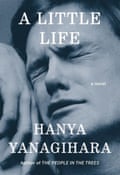
We get up to look at the page proofs for a forthcoming edition of the magazine, which is devoted to New York in the early 1980s, a period of cultural dominance in the city she compares to Berlin in the 1930s. “Every magazine editor has that period, an aesthetic set point they return to again and again, and for me it’s always been this one,” says Yanagihara. One photo spread features a group shot of people who got their start in early 1980s New York and looking at the line up – Willem Dafoe, Glenn Close, Sarah Jessica Parker, Matthew Broderick, Harvey Fierstein, Elizabeth McGovern, Joan Allen, Cynthia Nixon, among others – you can only marvel at the hours that must have gone into arranging it. On another page, Yanagihara reproduces the spine-chilling news story from the New York Times of 3 July 1981: “Rare cancer seen in 41 homosexuals”. Michael Cunningham writes the issue’s closing essay.
It is a love letter not only to New York, but to the idea of the centrality of art and culture to one’s life and Yanagihara explains her own life – its fullness and sacrifices – by quoting from a poem by Kenneth Koch: “You want a social life, with friends / A passionate love life and as well / To work hard every day. What’s true / Is of these three you may have two.” If half the battle in life is in knowing what you want and, by extension, what you don’t want, then Yanagihara seems to have it down pat. “The things the book have given me have been so unexpected and lovely,” she says of A Little Life. “But it’s not something that informs my daily life. It’s something that happens at night and when you’re specifically called. The rest of the time you’re Bruce Wayne.” She smiles at the strangeness of it. “But it worked well for Batman.”
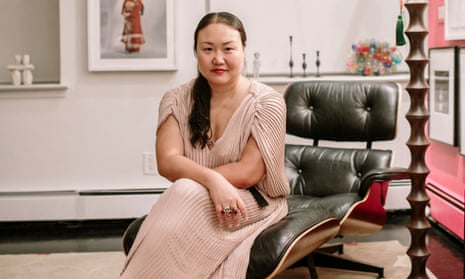
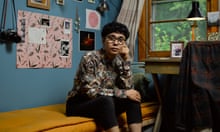
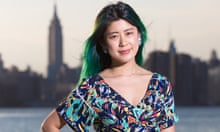

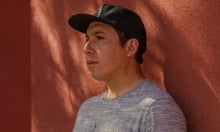
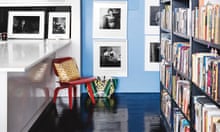

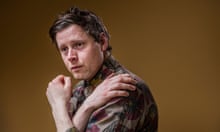

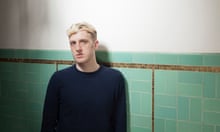

Comments (…)
Sign in or create your Guardian account to join the discussion